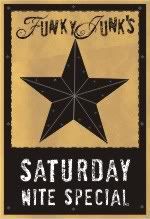When I worked in a craft store one of my favorite things was trying out new stuff that came into the store. I never dreamt I’d have the opportunity to do that again when I started blogging. Then along come the great people at Plaid Crafts who asked me to try out their new DIY Simply Screen.
What impressed me from the get-go is how everything is included in one box –
- three different sized screens plus a test screen
- squeegee for painting
- 3 paint pens
- paintbrush
- plastic rinse basin and sponge
- light fixture with on/off switch that fits into the top of the same box
- and a lightbulb!
Everything you need, except the paint, comes in the kit that retails for $39.99, available right now at Hobby Lobby. If you’re in California like me, Hobby Lobby accepts online orders, so no worries!
Plaid not only sent the kit, but also an assortment of paint, extra screens, and some glitter and adhesive. I was all set, but I gotta tell you, I was more than a little intimidated by what seemed to be a simple process.
It’s no secret I don’t do ‘simple’ well. And this thing was called “Simply Screen”. I might be in trouble.
But there are easy step-by-step instructions on the side of the box – so you can never lose them, ha!
Now all I needed was a design. You can either print one off the computer or draw one with marking pens.
I drew couple of Christmas ornaments, a flourish with scrolls, and the italicized “Believe” I printed off the computer. I went over each letter with a black Sharpie to make it darker so I’d get a better screen.
How To Use DIY Simply Screen
The screens are light-sensitive and come in a protective envelope. When you have your design ready, remove one of the screens in a low light room.
Remove the protective white paper on the blue screen.
Place your design face down on the sticky side of the blue screen – the same side the protective paper was on. Then take the squeegee and go over your pattern so it adheres to the screen well.
It’s helpful to cut your pattern paper to fit the screen, or smaller like I did. I used 20 lb. copy paper. The instructions recommend 10 lb. but I used what I had.
Lay the blue screen with your pattern face down on top of it into the box.
Then, either tape your pattern and screen down to the box or use a piece of glass. I just opened a picture frame and removed the glass.
As the light in the box heats up, the bond paper can curl up a bit and you won’t get a good screen image then. So you want to make sure your paper is down securely with either tape or glass.
Press the little switch and let the light do it’s thing for 25 minutes. I went a little longer so the fine details in the scrolls and italics would come out.
Pour some tepid water into the plastic basin. When your screen is ready, allow it to soak for about 30 seconds, then wipe the blue emulsion off with the enclosed sponge.
You can also try rubbing the screen in your sink. The solid surface seemed to work better for parts of the images. Just use a sink trap so the emulsion doesn’t go down your drain.
The photo above shows how the pattern emerges from just soaking. As you wipe with the sponge, these areas will whiten.
Allow the screen to dry thoroughly.
Painting With DIY Simply Screen
You can use the screens on all sorts of things (which is why I couldn’t decide what I wanted to paint on). Tshirts, fabrics for pillows, or even greeting cards.
I finally decided upon a canvas tote bag. Since I was using more than one color on my design, I used painter’s tape on the back of the screen to mark off the areas I didn’t want paint on my 1st pass. The tape is on the back so it wouldn’t interrupt the squeegee on the front.
Plus, I hoped painter’s tape wouldn’t harm or tear the screen. And it didn’t.
You’ll want whatever you’re painting to be secure and pulled taut, especially if it’s fabric. A sheet of cardboard works well and you can pull your fabric to the back and secure it with tape.
If you’re screenprinting canvas or other heavy material, you may need to break out the iron.
Sorry.
Secure the screen to your paint surface with tape. You might want to add more tape to the sides to protect those areas.
Squeeze out a generous line of paint above your design.
Hold the squeegee at a 45 degree angle and pull the paint over your design.
You can see where some of my scrollies didn’t make it onto the screen so the paint didn’t make it onto the tote bag.
I’m still experimenting with fine detail on the screens. But still, one pull on a squeegee and I had the silver completely painted.
Let’s not talk about how long it’d take me to paint this by hand. Just a wee bit longer than a pass with a squeegee, ok?
Since I wanted silver, gold and red, and since I’m rather impatient and didn’t want to wash the screen, dry the screen, tape the screen, and do it all over again, I just lined up the screen and painted the rest with a brush.
If you’re going to use more than one color, you’ll need to make some registration marks so you know where to line up your screen the 2nd time. I just made corners out of painter’s tape and peeled the tape off when I was done.
By the way, the squeegee & screen clean easily with soap & water.
Ok, so maybe a simpler design would’ve been better until I get used to screen printing. But really, it took me less than 10 minutes to fill in the gaps with a paintbrush.
I am more than thrilled with the lettering from the DIY Simply Screen. Did it come out perfectly? No. But did it save me oodles of time? Absolutely. And I didn’t choose the simplest font either.
To add a little more sparkle, I glued on some Swarovski crystals. Hey! ‘Tis the season, right?
I’ll be honest – it took me more than a couple of tries to get this result, which wasn’t exactly perfect. There is a learning curve with the DIY Simply Screen and you’ll want to experiment for a while to feel comfortable.
But, do I like it? Absolutely. Would I use it again? The refill screens were ordered before I wrote this post – if that answers the question. And that’s the great thing – you only have to buy the kit once and then you can just get refill screens for new designs.
Think about it – what could you screen print? (after heat-setting with an iron, fabric is washable.)
- tablecloths
- runners
- placemats
- pillowcases
- tshirts
- aprons
- greeting cards
- labels for clothing you make (no tags needed!)
- etc., etc., etc!
I’m not kidding! Check out what some other bloggers made with the DIY Simply Screen.





















No comments:
Post a Comment